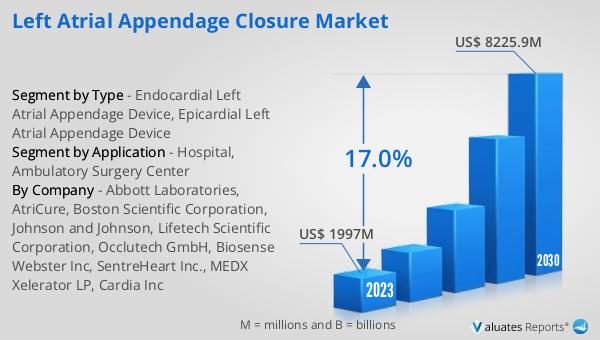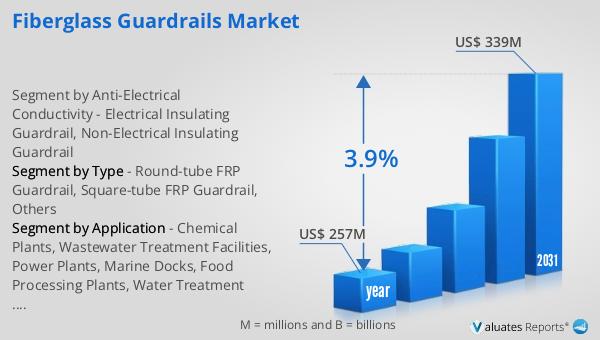What is Global Left Atrial Appendage Closure Market?
The Global Left Atrial Appendage Closure Market refers to the market for medical devices and procedures aimed at closing the left atrial appendage (LAA) of the heart. The LAA is a small, ear-shaped sac in the muscle wall of the left atrium, which can be a source of blood clots in patients with atrial fibrillation (AFib). These clots can travel to other parts of the body, including the brain, leading to strokes. The closure of the LAA is a preventive measure to reduce the risk of stroke in patients who cannot take long-term anticoagulant medications. The market includes various devices and surgical procedures designed to seal off the LAA, thereby preventing blood clots from forming and escaping into the bloodstream. This market is driven by the increasing prevalence of atrial fibrillation, advancements in medical technology, and the growing awareness of stroke prevention methods. The market is also influenced by regulatory approvals, clinical trials, and the adoption of these devices by healthcare providers worldwide.

Endocardial Left Atrial Appendage Device, Epicardial Left Atrial Appendage Device in the Global Left Atrial Appendage Closure Market:
The Global Left Atrial Appendage Closure Market includes two main types of devices: Endocardial Left Atrial Appendage Devices and Epicardial Left Atrial Appendage Devices. Endocardial devices are inserted through the blood vessels and placed inside the heart to seal the LAA from within. These devices are typically delivered via a catheter inserted through a vein in the leg and guided to the heart. Once in place, the device expands to block the opening of the LAA, preventing blood clots from escaping. The most well-known endocardial device is the WATCHMAN device, which has been extensively studied and is widely used in clinical practice. Epicardial devices, on the other hand, are placed on the outside of the heart to close the LAA. These devices are usually implanted through a minimally invasive surgical procedure, such as thoracoscopy or robotic-assisted surgery. The LARIAT device is a commonly used epicardial device that involves placing a loop around the base of the LAA and tightening it to close off the appendage. Both types of devices have their advantages and disadvantages. Endocardial devices are less invasive and can be placed without the need for open-heart surgery, making them suitable for patients who are at high risk for surgical complications. However, they may not be suitable for all patients, particularly those with certain anatomical variations or other medical conditions. Epicardial devices, while more invasive, can be used in a broader range of patients and may provide a more complete closure of the LAA. The choice between endocardial and epicardial devices depends on various factors, including the patient's overall health, the anatomy of the LAA, and the physician's experience and preference. Both types of devices have shown promising results in reducing the risk of stroke in patients with atrial fibrillation, and ongoing research and development are expected to further improve their safety and efficacy. The market for these devices is growing rapidly, driven by the increasing prevalence of atrial fibrillation, the aging population, and the rising demand for minimally invasive procedures. As more patients and healthcare providers become aware of the benefits of LAA closure, the adoption of these devices is expected to increase, further driving market growth.
Hospital, Ambulatory Surgery Center in the Global Left Atrial Appendage Closure Market:
The usage of Global Left Atrial Appendage Closure Market devices in hospitals and ambulatory surgery centers (ASCs) is crucial for the management and prevention of stroke in patients with atrial fibrillation. Hospitals are the primary settings for the implantation of these devices, given their comprehensive medical facilities and the availability of specialized cardiac care teams. In hospitals, patients undergo thorough pre-procedural evaluations, including imaging studies and blood tests, to determine their suitability for LAA closure. The procedure is typically performed in a cardiac catheterization lab or an operating room equipped with advanced imaging and monitoring equipment. Hospitals also provide post-procedural care, including monitoring for complications, managing anticoagulation therapy, and conducting follow-up visits to assess the device's effectiveness. The multidisciplinary approach in hospitals ensures that patients receive comprehensive care before, during, and after the procedure. Ambulatory surgery centers (ASCs) are increasingly becoming popular settings for LAA closure procedures due to their convenience, cost-effectiveness, and shorter recovery times. ASCs are specialized facilities that focus on providing same-day surgical care, including diagnostic and preventive procedures. The use of ASCs for LAA closure is particularly beneficial for patients who are at low risk for complications and do not require extended hospital stays. In ASCs, patients can undergo the procedure in a less intimidating environment compared to hospitals, which can reduce anxiety and improve overall patient experience. The streamlined processes in ASCs also contribute to shorter procedure times and quicker discharges, allowing patients to return to their normal activities sooner. However, the success of LAA closure in ASCs depends on careful patient selection, the expertise of the surgical team, and the availability of appropriate post-procedural care. Both hospitals and ASCs play a vital role in the Global Left Atrial Appendage Closure Market by providing access to these life-saving procedures. The choice of setting depends on various factors, including the patient's medical condition, the complexity of the procedure, and the availability of specialized care. As the demand for LAA closure continues to grow, both hospitals and ASCs are expected to expand their capabilities and enhance their services to meet the needs of patients with atrial fibrillation. The collaboration between these healthcare settings ensures that patients have access to the best possible care, regardless of where the procedure is performed.
Global Left Atrial Appendage Closure Market Outlook:
The global Left Atrial Appendage Closure market was valued at US$ 1997 million in 2023 and is anticipated to reach US$ 8225.9 million by 2030, witnessing a CAGR of 17.0% during the forecast period 2024-2030. According to our research, the global market for medical devices is estimated at US$ 603 billion in the year 2023 and will be growing at a CAGR of 5% during the next six years. This significant growth in the Left Atrial Appendage Closure market can be attributed to the increasing prevalence of atrial fibrillation, advancements in medical technology, and the growing awareness of stroke prevention methods. The market is also influenced by regulatory approvals, clinical trials, and the adoption of these devices by healthcare providers worldwide. As more patients and healthcare providers become aware of the benefits of LAA closure, the adoption of these devices is expected to increase, further driving market growth. The collaboration between hospitals and ambulatory surgery centers ensures that patients have access to the best possible care, regardless of where the procedure is performed. The streamlined processes in ASCs contribute to shorter procedure times and quicker discharges, allowing patients to return to their normal activities sooner. The multidisciplinary approach in hospitals ensures that patients receive comprehensive care before, during, and after the procedure. Both hospitals and ASCs play a vital role in the Global Left Atrial Appendage Closure Market by providing access to these life-saving procedures. The choice of setting depends on various factors, including the patient's medical condition, the complexity of the procedure, and the availability of specialized care. As the demand for LAA closure continues to grow, both hospitals and ASCs are expected to expand their capabilities and enhance their services to meet the needs of patients with atrial fibrillation.
| Report Metric | Details |
| Report Name | Left Atrial Appendage Closure Market |
| Accounted market size in 2023 | US$ 1997 million |
| Forecasted market size in 2030 | US$ 8225.9 million |
| CAGR | 17.0% |
| Base Year | 2023 |
| Forecasted years | 2024 - 2030 |
| Segment by Type |
|
| Segment by Application |
|
| Consumption by Region |
|
| By Company | Abbott Laboratories, AtriCure, Boston Scientific Corporation, Johnson and Johnson, Lifetech Scientific Corporation, Occlutech GmbH, Biosense Webster Inc, SentreHeart Inc., MEDX Xelerator LP, Cardia Inc |
| Forecast units | USD million in value |
| Report coverage | Revenue and volume forecast, company share, competitive landscape, growth factors and trends |
